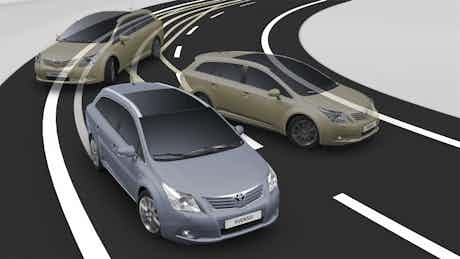Understeer vs oversteer: What’s the difference?
May 13, 2022 by Andrew Evans

These terms often pepper car reviews – but what exactly are understeer and oversteer, and how do you deal with them if they occur?
Understeer and oversteer may be relatively unfamiliar words you’ve only come across in car reviews, but they’re useful concepts for drivers to know about. Modern cars are fitted with safety systems such as electronic stability control, which keep can prevent understeer and oversteer, but learning about these behaviours can bring a greater understanding of how a car behaves in different circumstances.

What is understeer?
Understeer is an undesirable behaviour that occurs when a car turns less than is desired when a corner is being taken – IE you are turning the steering wheel to the left relatively sharply, but the car only turns left slightly. Understeer may also be accompanied by the tyres screeching as they lose grip.
What causes it?
Understeer is more associated with front-wheel drive cars then rear-wheel drive cars, and in the simplest terms, understeer happens when you try to take a corner too fast. The front wheels in a front-wheel drive car have a lot to do: they have to transmit power from the engine to the road, while also managing the car’s direction of travel, and slowing the car down with the brakes are applied.
If you ask too much of the front wheels, and put in too much steering input for the speed you are travelling at, the front wheels will not be able to cope; they will exceed their limits of traction, and not be able to transmit the desired cornering forces to the road.

Slow down! Understeer almost always occurs when the driver is going too fast for the road conditions – but this can be as innocuous as doing 15mph around a damp mini-roundabout. Taking things more slowly will avoid most instances of understeer.
If your car begins to understeer, rather than braking, which would actually be asking more of the front wheels, you should simply start to reduce the amount you’re pressing the accelerator. If you’re already braking, ease gently off the brakes as well; don’t take your feet off either pedal suddenly.
It may seem instinctive to increase the amount you’re steering if your car is understeering, but this can actually make the situation worse, Instead, reduce the amount of steering angle you’re applying. This will increase your chances of getting control of the car back before that happens.

What is oversteer?
While understeer is a more common behaviour with front-wheel drive cars, oversteer is more common in rear-wheel drive cars.
The rear wheels in a rear-wheel drive only have to deal with delivering power to the road and braking, rather than steering as well, but if you put too much power through them they can lose traction. In extreme circumstances oversteer can cause the rear of the car to ‘pendulum’ around the front, with the car spinning out of control.
Controlled oversteer is something you may have seen professional drivers do on films television. This is known as ‘powersliding’ or ‘drifting’, and while it looks impressive, it’s very easy to get wrong if you don’t know what you’re doing.
What causes it?
Oversteer happens when the car is turning and the driver applies more power than the tyres can deal with. This makes the tyres slip and try to push in the opposite direction to the turn, kicking the back end of the car out. The same effect can happen by braking too hard while turning or by suddenly removing your foot from the throttle.
Oversteer looks great on a racetrack or at a drift competition, as the rear of the car slithers about and billows tyre smoke into the stands, but it’s not as much fun on a public road as it usually foreshadows a very big accident.

How to stop oversteering
Much the same advice applies as for understeer – slow down! Power oversteer is often caused by the driver accelerating too soon in a corner so, if you’re at this stage, you need to reduce your speed. If you’re unlucky enough to get into an oversteer situation try to remember some basic tips – keep looking and steering in the direction you want to go and don’t suddenly jump off the accelerator or slam on the brakes. If you can, try to modulate the throttle to gradually bring yourself to a halt.
Take particular care if you’re an inexperienced or not especially confident driver if you buy a rear-wheel drive car. It should go without saying, don’t deactivate your traction or stability control unless you’re at a racetrack.

Other advice
In cold, rainy weather, a car’s willingness to oversteer or understeer is greatly increased because there’s less friction between tyre and road. This is even worse in the snow so always pay close attention to the weather conditions.
Since tyres are a significant component of the phenomenon, make sure yours are always at the appropriate pressure and sufficient tread depth to deal with surface water. If your car is started to display more oversteer or understeer than usual, check your tyres and also consider having the wheel alignment checked.















